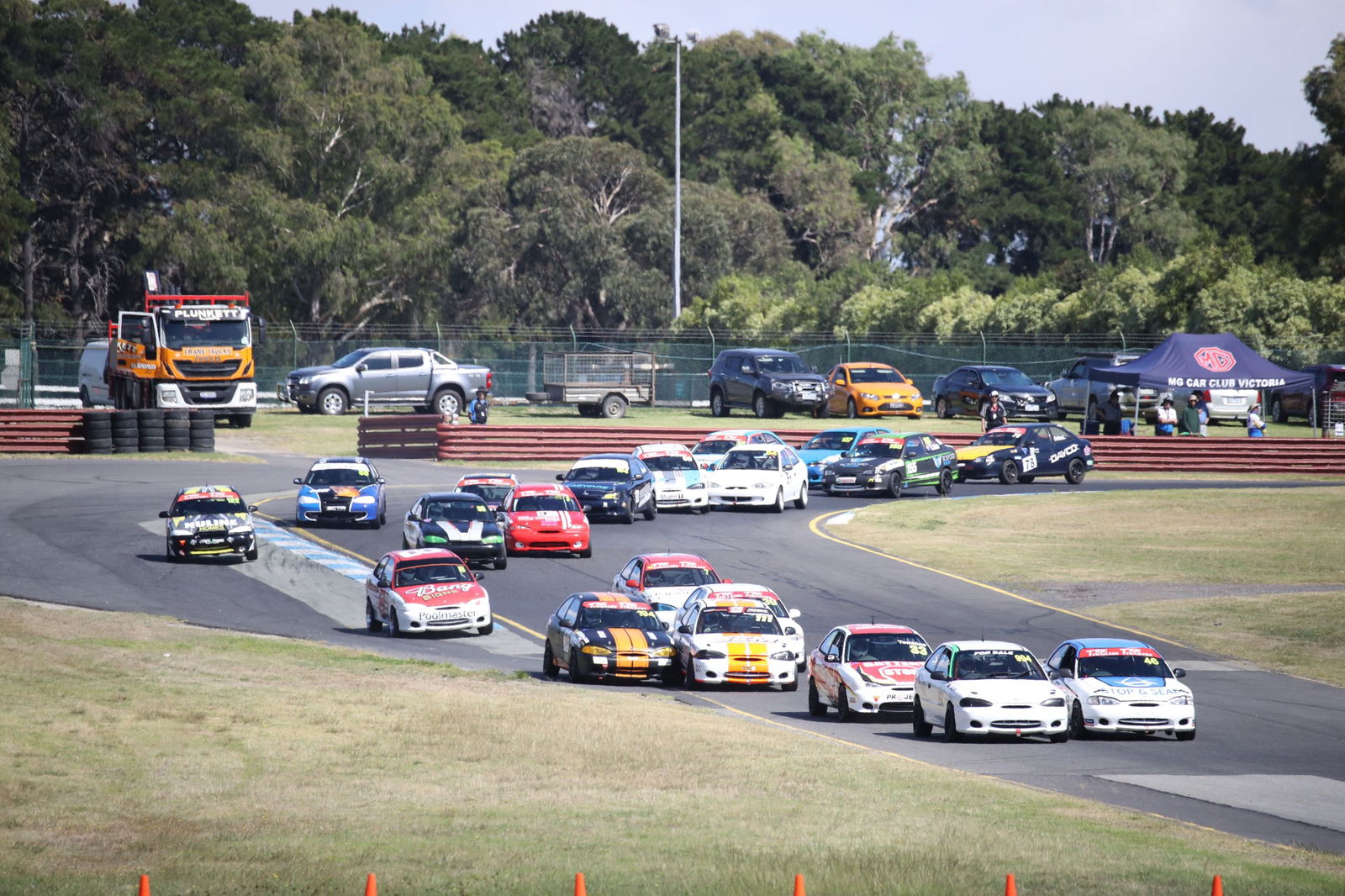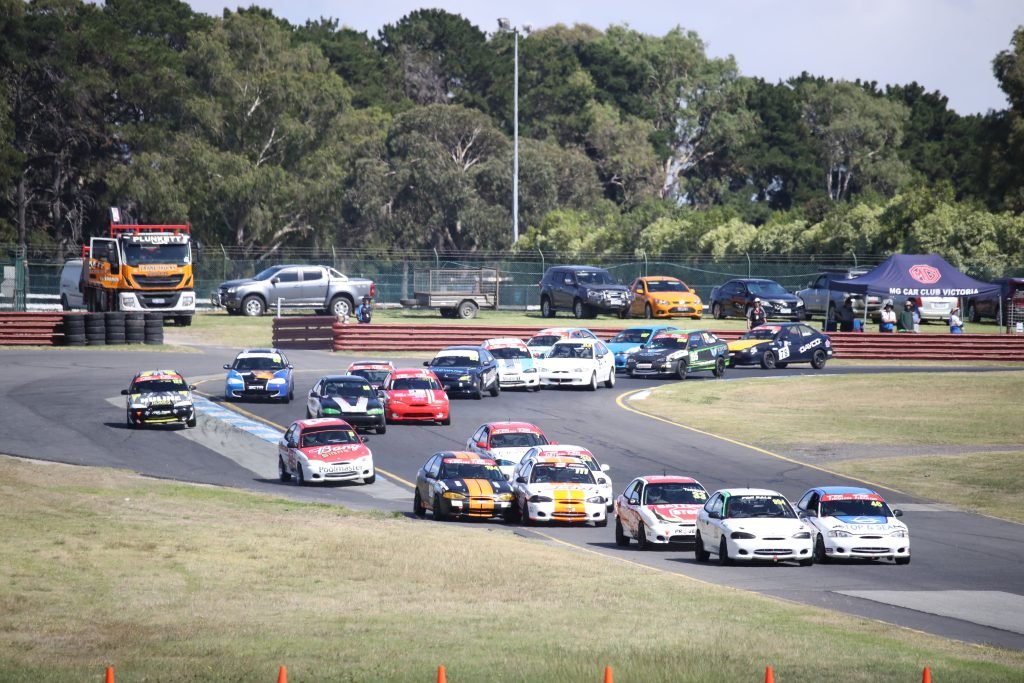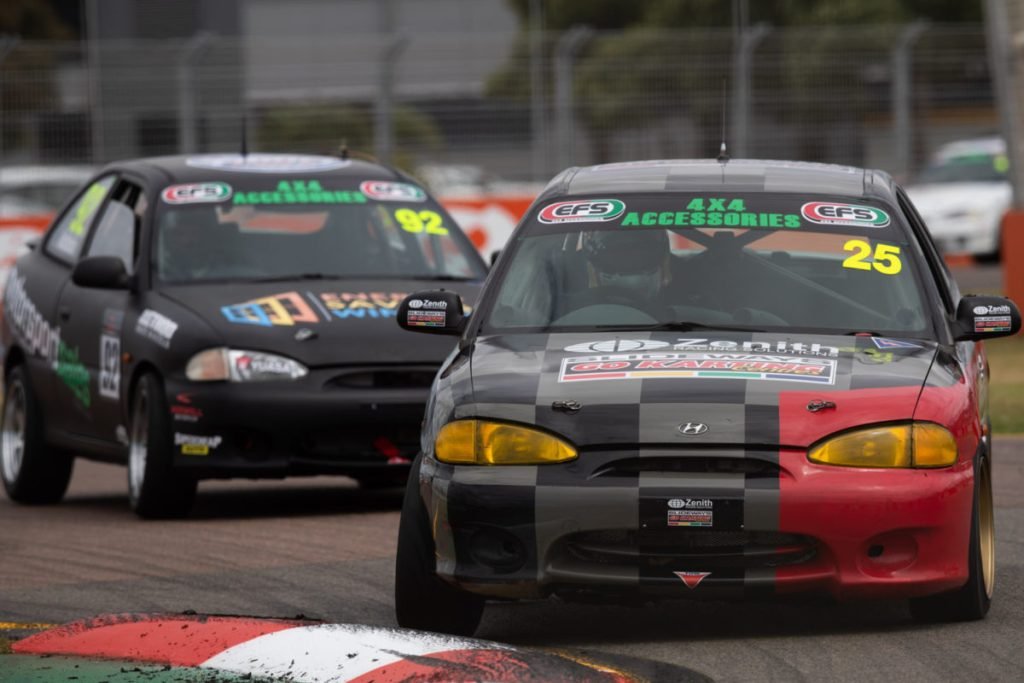

It’s almost a quarter of a century since the last of around 200,000 Hyundai Excels landed on these shores. And yet, the humble three-door twin cam hatch version is currently the most prolific competition car in Australia. Almost every weekend, race tracks across the country reverberate to the sound of big grids of Excels, whether that be under Motorsport Australia stewardship or that of AASA.
Most ‘living’ twin cam Excels have been rounded up and built into race cars since Excel racing kicked off some 10 years ago. And therein lies a problem. It’s getting more and more difficult to source parts for them. The beauty of the Excel has been that second-hand parts were two a penny and easy to find for a long time thereby keeping running costs within reach of almost any budding racer.
Moreover, increasingly even new parts at any price are no longer available.
There’s also no obvious replacement for the Hyundai. And that’s an issue for Motorsport Australia today. But I’m not sure that this issue is as high on the priority list for them as it should be.
You see, without a race car like the Excel, hundreds of competitors are highly unlikely to be out there racing. There are long term Excel racers who spend years in the category, but it’s also the toe-in-the-water exercise for so many others. Kids stepping up from karting see Excels as a way to learn the ropes and understand whether they have the commitment to go further in the sport, whilst more mature participants can also find their feet on the track in a race car that’s not intimidating and is extremely cost-effective.

There’s nothing else out there that quite fits the bill in the way that the Excel does. In many ways, the natural replacement should be the Toyota 86/Subaru BRZ. But they didn’t (and don’t) sell in anything like the same numbers as the Hyundai did, and are a whole lot more expensive. They’ll play an increasing role in state level motorsports undoubtedly, but they probably can’t actually replace the Excel.
Entry level motorsport is vital, and if MA is to thrive in years to come, it’s absolutely imperative that there continues to be a junior category of this nature.
There’s actually no reason that Excels shouldn’t carry on racing for years to come – if the right steps are taken to ensure that parts are available. And that’s where it would be good to see everyone who runs the cars, whether under MA or AASA jurisdiction, come together and thrash out a system of homologation for replacement parts that can be used across all events. Please avoid going down two different pathways on this.
These would range from lights and body parts to mechanical components. Anyone could produce them but they’d have to be approved. Market forces and competition would keep prices reasonable but unapproved parts wouldn’t be allowed. Of course, if a supplier comes up with a replacement widget at a good price and quality level and has it approved for use, then the chances are that supplier will probably corner the market. And good luck to them.
The danger of not implementing an homologation system is that replacement parts will undoubtedly have to be made, and will be made. But if the specification of those parts, particularly mechanical ones, is not controlled centrally and effectively then the variances will just grow and grow, little by little as people push their luck.

That’ll lead to on-track performance differences and, ultimately, large scale discontent.
A part of the beauty of the racing Excel is not only the economic accessibility of the category, but also the relatively straightforward way that a family can build up, or rebuild, a car at home in the shed. So far, it’s been pretty easy to understand what’s needed to put that car together. If, however, there’s gradually an increasing preponderance of ‘replacement’ parts being used that might not quite conform to the spirit of regulations (putting it nicely), then that’s going to put uninitiated folk off from getting involved.
If I was in the chair at MA, I’d be looking a lot harder at the future of entry level racing, and Excels in particular, than I would be at vanity projects like the Ferrari Academy. The current president of the FIA has given that organisation the task of growing grassroots motorsports under his watch. It would be a shame to see those grassroots dying here due to a lack of direction.
Whilst there’s a real threat to the Excel future if the category isn’t nurtured properly, it’s wonderful to see not only the proliferation of cars out there at the moment, but also the daughter of a certain famous father popping up at the top of the time sheets regularly. Is Tabitha Ambrose going to be the next female Supercars driver? I wouldn’t bet against it.





















Discussion about this post